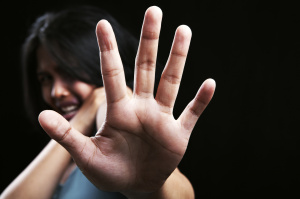 Domestic violence (also known as intimate partner violence) can happen to anyone, regardless of gender, race, ethnicity, sexual orientation, income, or other factors.
Domestic violence (also known as intimate partner violence) can happen to anyone, regardless of gender, race, ethnicity, sexual orientation, income, or other factors.
The Victims
- 1 in 4 women will experience domestic violence during her lifetime.
- Women experience more than 4 million physical assaults and rapes because of their partners, and men are victims of nearly 3 million physical assaults.
- Women are more likely to be killed by an intimate partner than men
- Women ages 20 to 24 are at greatest risk of becoming victims of domestic violence.
- Every year, 1 in 3 women who is a victim of homicide is murdered by her current or former partner.
- Some people are unfortunately falsely accused of these horrendous acts and need a criminal defense attorney to help fight the accusation.
The Families
- Every year, more than 3 million children witness domestic violence in their homes.
- Children who live in homes where there is domestic violence also suffer abuse or neglect at high rates (30% to 60%).
- A 2005 study found that children exposed to domestic violence at home are more likely to have health problems, including becoming sick more often, having frequent headaches or stomachaches, and being more tired and lethargic.
- A 2003 study found that children are more likely to intervene when they witness severe violence against a parent – which can place a child at great risk for injury or even death.
The Circumstances
- Domestic violence is most likely to occur between 6 pm and 6 am.
- More than 60% of domestic violence incidents happen at home.
The Consequences
- According to the U.S. Department of Housing and Urban Development, domestic violence is the third leading cause of homelessness among families.
- Many homeless heads of household became homeless due to domestic violence.
- Survivors of domestic violence face high rates of depression, sleep disturbances, anxiety, flashbacks, and other emotional distress.
- Domestic violence contributes to poor health for many survivors. For example, chronic conditions like heart disease or gastrointestinal disorders can become more serious due to domestic violence.
- Among women brought to emergency rooms due to domestic violence, most were socially isolated and had fewer social and financial resources than other women not injured because of domestic violence.
- Without help, girls who witness domestic violence are more vulnerable to abuse as teens and adults.
- Without help, boys who witness domestic violence are far more likely to become abusers of their partners and/or children as adults, thus continuing the cycle of violence in the next generation.
- Nationally, domestic violence costs more than $37 billion a year in law enforcement involvement, legal work, medical and mental health treatment, and lost productivity at companies.
#1 FACT:
Most domestic violence incidents are never reported.
Help change the facts. Speak up, speak out, and make a difference for victims of domestic violence.
How to Make a Difference
Give victims of domestic violence the support they deserve.
Find more Resources
Bureau of Justice Statistics, Office of Justice Programs. Intimate Partner Violence in the United States
Centers for Disease Control and Prevention, Injury Prevention and Control: Violence Prevention.
National Coalition Against Domestic Violence, Fact Sheets
National Criminal Justice Reference Center, Family Violence – Facts and Figures
